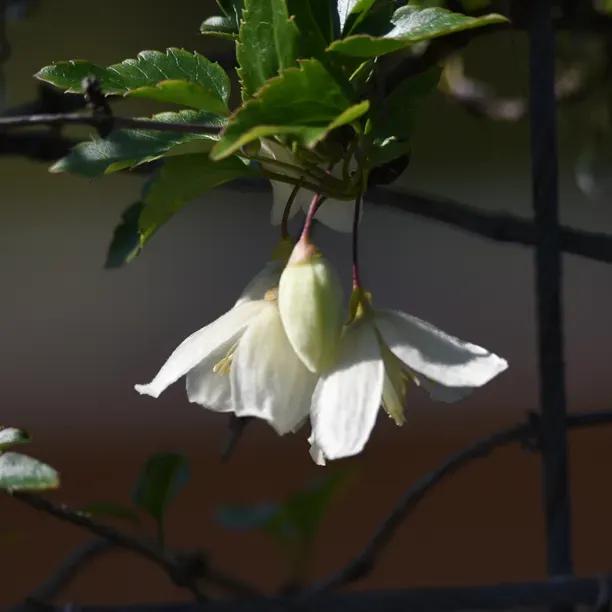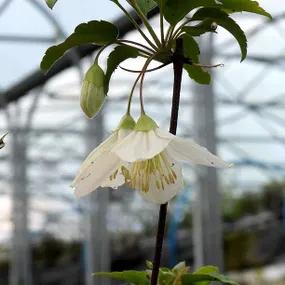Jingle Bells Clematis, Winter Flowering
The details
Clematis cirrhosa purpurescens
- Pale yellow to cream flowers
- Flowers November to February/March
- Silky seedheads
- Scented: No / very mild
- Evergreen leaves
- Height x spread: Up to 3.5m x 3.5m
- Rated H4: treat as half-hardy. Prefers plenty of sun
- Type: Cirrhosa
- Habit: Climber
- Pruning group 1
- RHS Plants for Pollinators
Recommended extras
Description
Clematis cirrhosa Jingle Bells: Evergreen & Winter Flowering. Pot Grown Plants
Bell shaped, pale yellow to cream flowers in midwinter, followed by seedheads. Evergreen. To 3.5m x 3.5m
Browse our full range of climbing plants for more spring-flowering clematis.
Delivery season: Clematis are delivered in pots year round, when in stock. It is usually best not to plant out pot grown plants in winter, but to keep them until Spring, because they will establish faster in warm soil and give you better first year growth.
Choosing a size: Small plants are cheaper and more forgiving of less than ideal aftercare, so they are best for a big planting project. If instant impact is your priority, or if you are only buying a few plants for ornamental use in a place where it is convenient to water them well in their first year, then you may as well use bigger ones. All our climbing plants come in standard pot sizes.
Features:
- Pale yellow to cream flowers
- Flowers November to February/March
- Silky seedheads
- Scented: No / very mild
- Evergreen leaves
- Height x spread: Up to 3.5m x 3.5m
- Rated H4: treat as half-hardy. Prefers plenty of sun
- Type: Cirrhosa
- Habit: Climber
- Pruning group 1
- RHS Plants for Pollinators
Growing Clematis
It will be happiest in alkaline or neutral soil.
Being of Balearic Mediterranean origin, it prefers a warm, sunny corner of your garden. It is fine to grow in most parts of Scotland, as long as it has sun and good shelter from wind and frost.
It won't rampage as vigorously as some other Clematis, so you won't need to tidy it much, except normal maintainance on mature plants.
Planting Instructions
How to grow Clematis cirrhosa:
This evergreen clematis is rated H4 (-10 to -5), hardy through most of the UK. Treat it as half-hardy, preferring a sheltered, sunny spot. In the North, it likes a cosy urban microclimate, ideally the South facing wall of a heated building. This bit of protection should keep the foliage and flowers in good condition. It may become dormant in a summer heat wave, this is normal, and it will immediately grow again when the weather cools.
- Pruning Group 1: Pruning is not essential, but removal of the dead, damaged and unproductive old stems will keep the plant healthy and encourage vigorous growth.
- It likes close to full sun on its leaves, and full shade around the base and roots.
- Keep root zone cool with a mulch, other plants or pebbles. A big slab of stone is good, but be sure that water flows under it.
- Feed and mulch after flowering.
Look out for:
Clematis slime flux. It's an uncommon bacterial infection but can be fatal. It happens when the plant has an injury and bacteria infect the wound. Signs include wilting and yellowing of the leaves, as well as the unpleasant slime in the stems where the plant is affected. Earwigs, aphids, and fungal infections can also affect Clematis. It does not suffer from Clematis wilt.
Did You Know?
Bred by Robin Savill, introduced in 1995.
Jingle Bells was written in 1857 by James Lord Pierpont (1822-1893) under the title The One Horse Open Sleigh; the worldwide famous catchy tune is also modified from the original.



